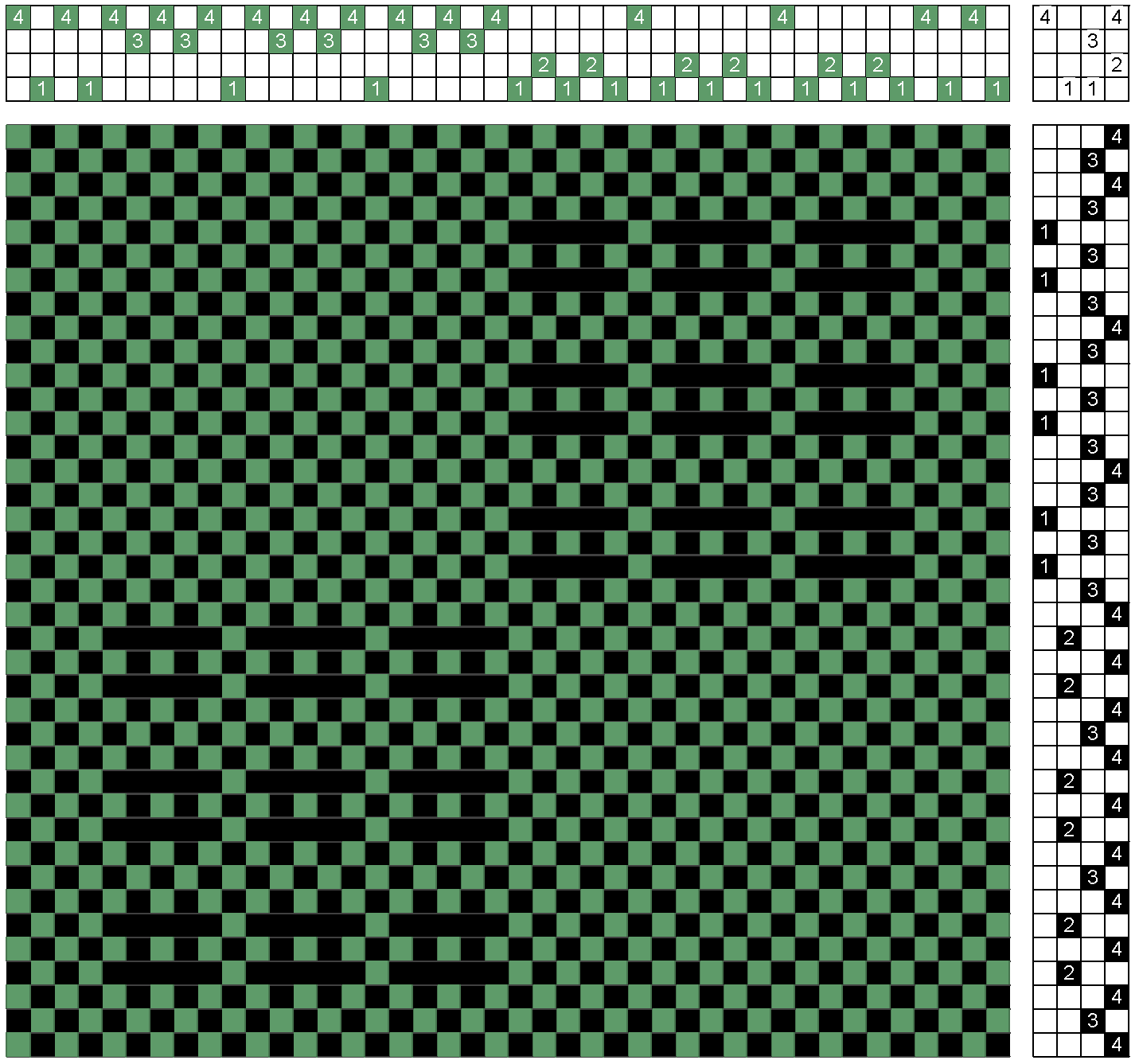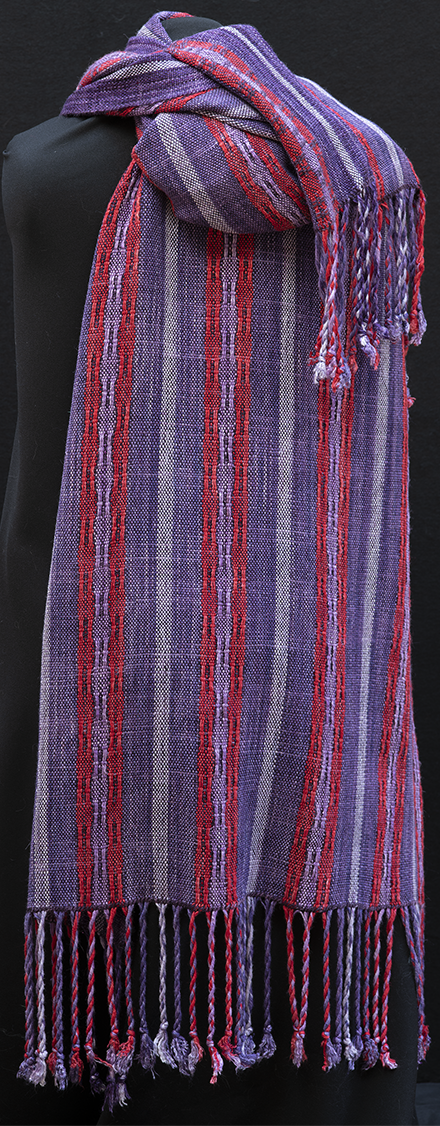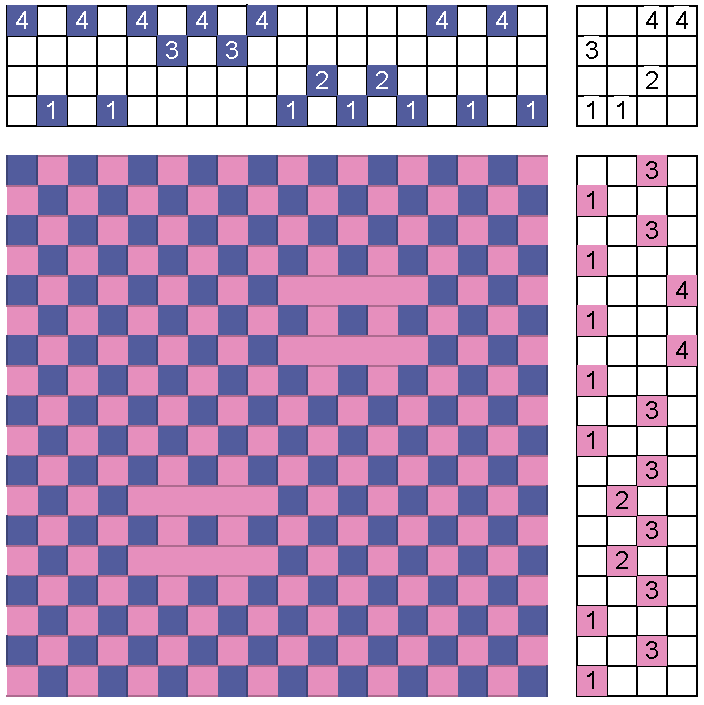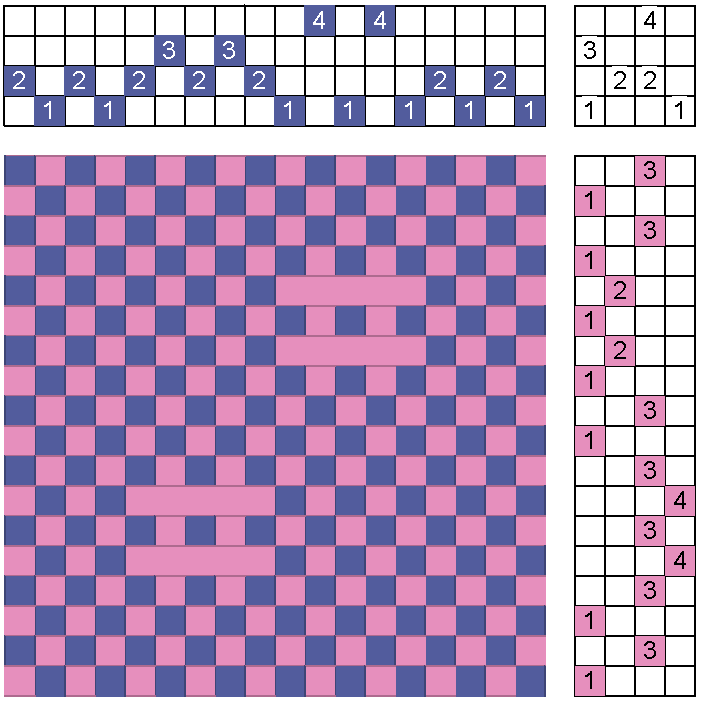| Swedish Lace or Droppdräll? |
Marcy Petrini
June, 2022
A long, long time ago in a region far, far away, a group of weavers were looking for new patterns to try. They came across a Swedish book and found an interesting structure. It was called something like droppdräll, which was hard to pronounce and difficult to spell. But they wove it and liked it. The problem now was to tell others about this weave. They weren’t sure of the meaning of the word. Someone said: it looks like a lace weave, and it is Swedish, so let’s call it Swedish Lace.
Many moons passed and this weaver decided to try Swedish Lace. We had used Mary Black’s book New Key to Weaving when I took weaving courses in Rochester, NY, for nearly one-year. Then I moved. Of course, we had not woven every structure in the book, so I wanted to “fill the holes” and came across Swedish Lace.
In her book Mary Black describes the structure as having three repeats of each of the two six-thread blocks as shown in the drawdown below.

She also says: “It is this sixth thread which, when crossed by a weft thread forms the little window between the units of the blocks which is a distinguishing feature of the weave.”
I wove a small mat, long lost, but similar to the sample below that I have woven more recently.

I liked the structure and promised myself that I would return to it – later.
Many more moons passed, and I eventually settled down to weaving scarves and shawls, primarily with twills and satins, but every few pieces, I decide that I need to try – or re-try – something other than another twill.
So, not too long ago, I decided I would weave a Swedish Lace shawl. The impetus was that I would be presenting at Convergence® a seminar on Rectangular Float Weaves which include Swedish Lace.
The finished shawl is below. As I was weaving, I kept on thinking that the structure looked similar to huck and finally I decided I needed to figure out the difference – besides Mary Black’s “little windows.’”

In a previous blog we talked about droppdräll being huck. We also compared huck the way we generally weave it now and the traditional threading, which is the way I learned. As a refresher here are the two drafts leading to the same drawdown.
Below on the left is the drawdown for the traditional huck, modern on the right.
 |
 |
Do you see that Swedish Lace is three adjacent blocks of huck? When we want to thread more than one block in huck, we delimit the float with the alternate tabby. We can think of each block of huck in two ways: 1) five threads, alternating a tabby thread with a pattern thread, ending with the tabby; then we use the alternate tabby to delimit the float if we want to repeat the block; 2) six threads wide as Mary Black does, but that’s only true if a block is repeated. The float of a single block or of the end block in a sequence is delimited by the tabby starting the next block. That is shown in all the drawdowns above.
Thus, I have come to the conclusion that Swedish Lace is droppdräll, which is huck. Swedish designs are very clever in arranging the blocks in pleasing combinations. The Swedish Lace arrangement doesn’t surprise me. But the blocks are that of huck.
Clearly my silly story at the beginning of this blog is made up, but my imagination may not be too far from the truth. I still can’t pronounce droppdräll correctly, but unlike my fictional weavers, I will find out before Convergence™!
I hope to see you at Convergence®, maybe even in one of my seminars – vaccinated and masked, we will both be safe.
I would love to see you there!
Happy weaving!
Marcy
